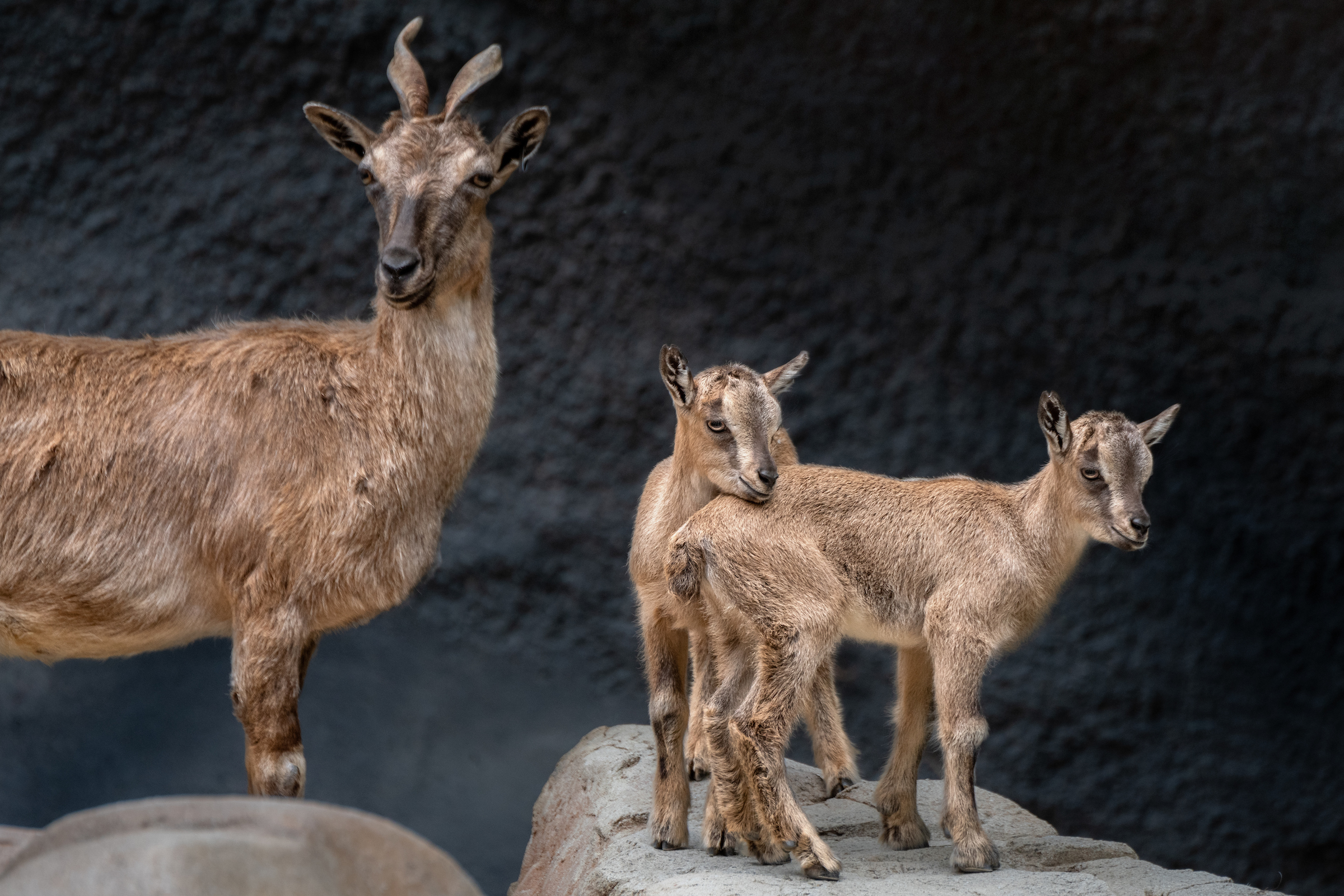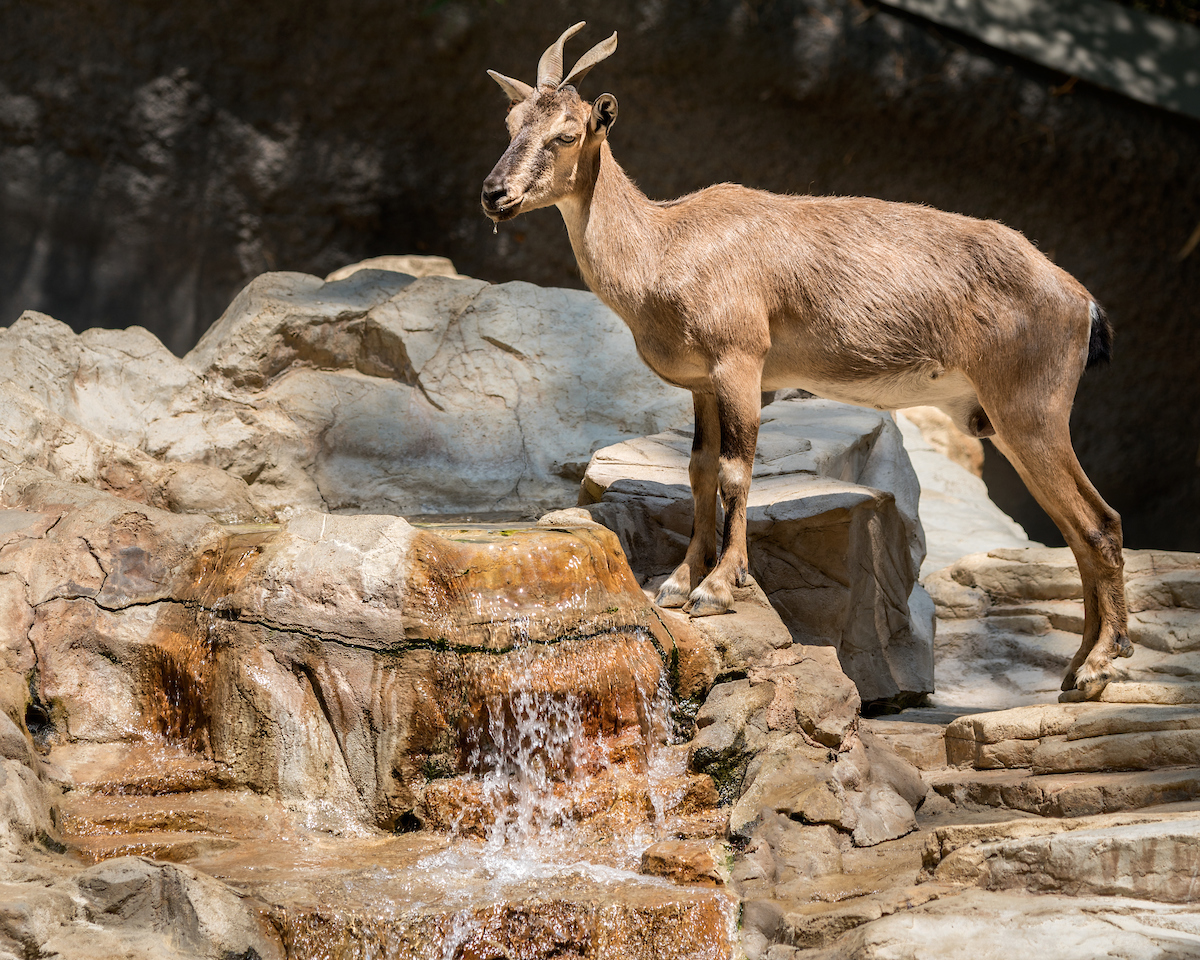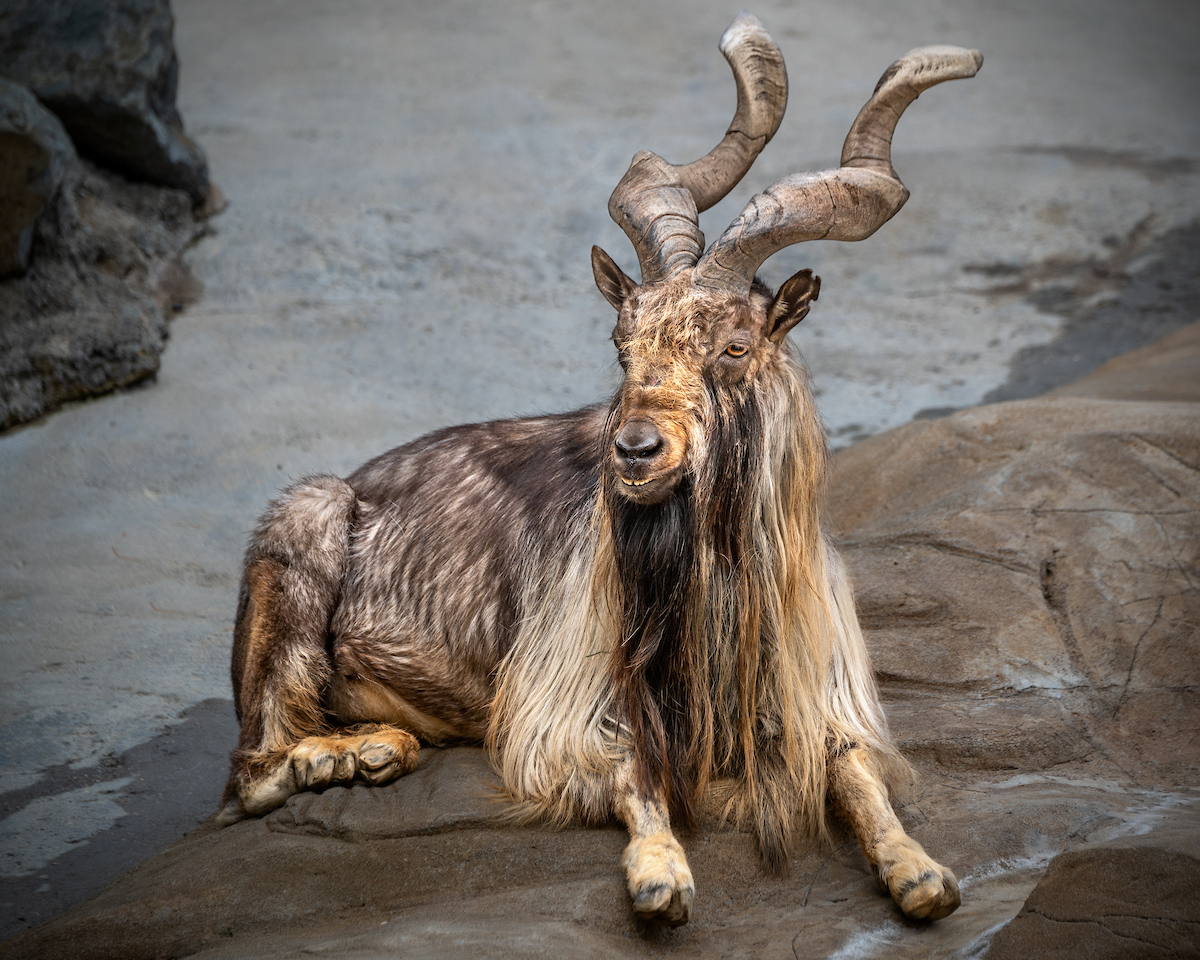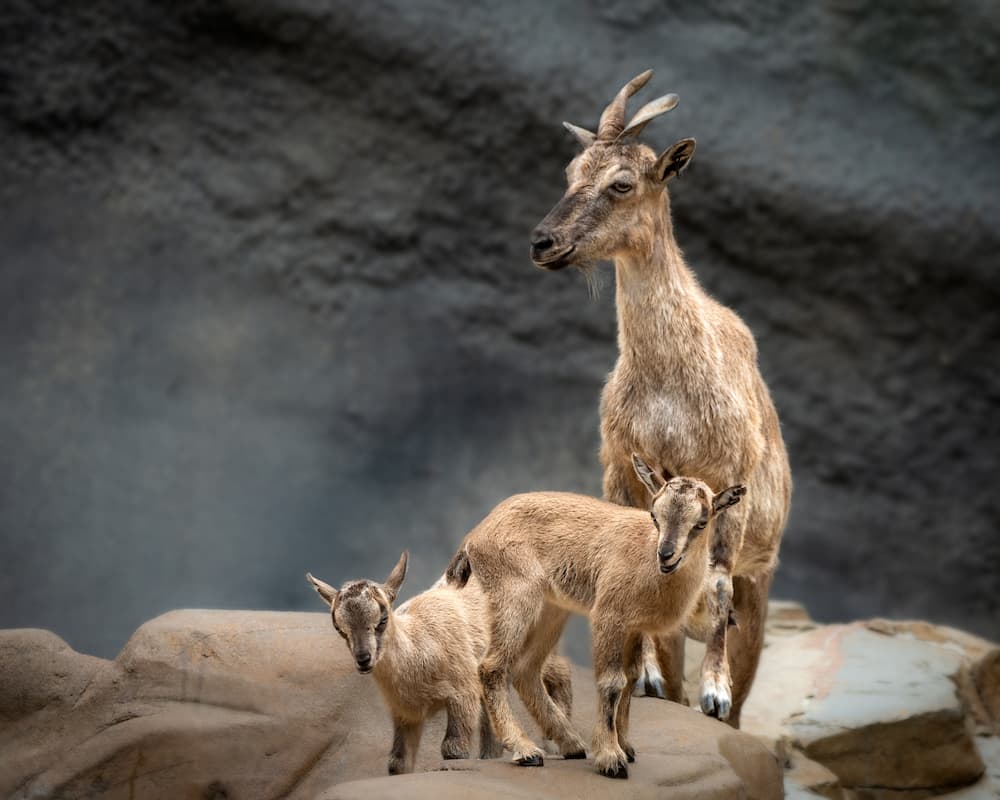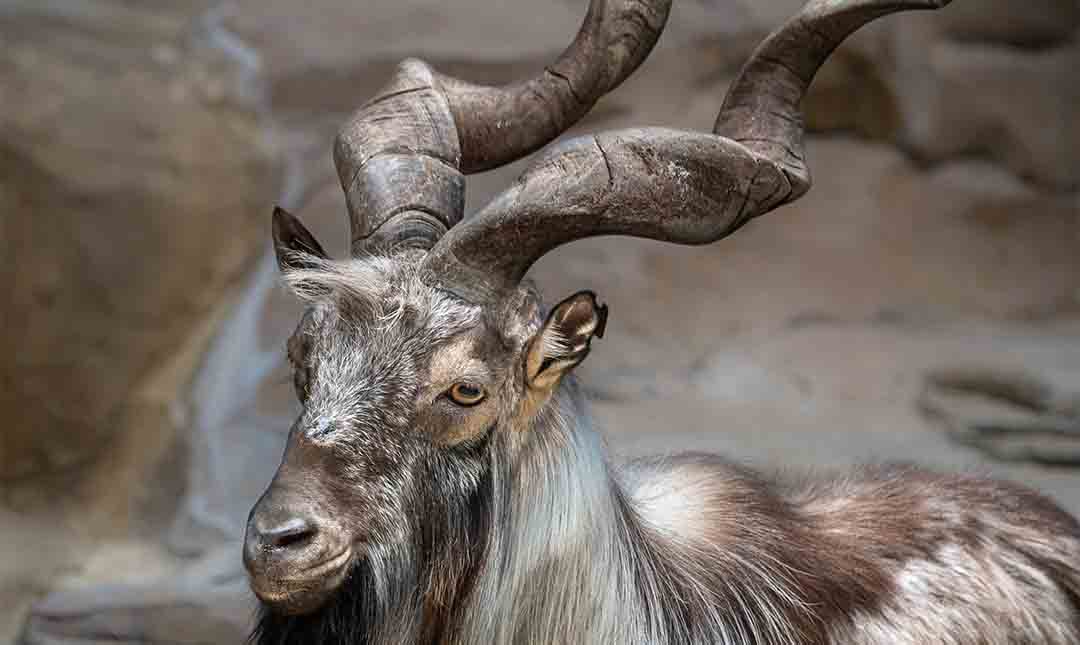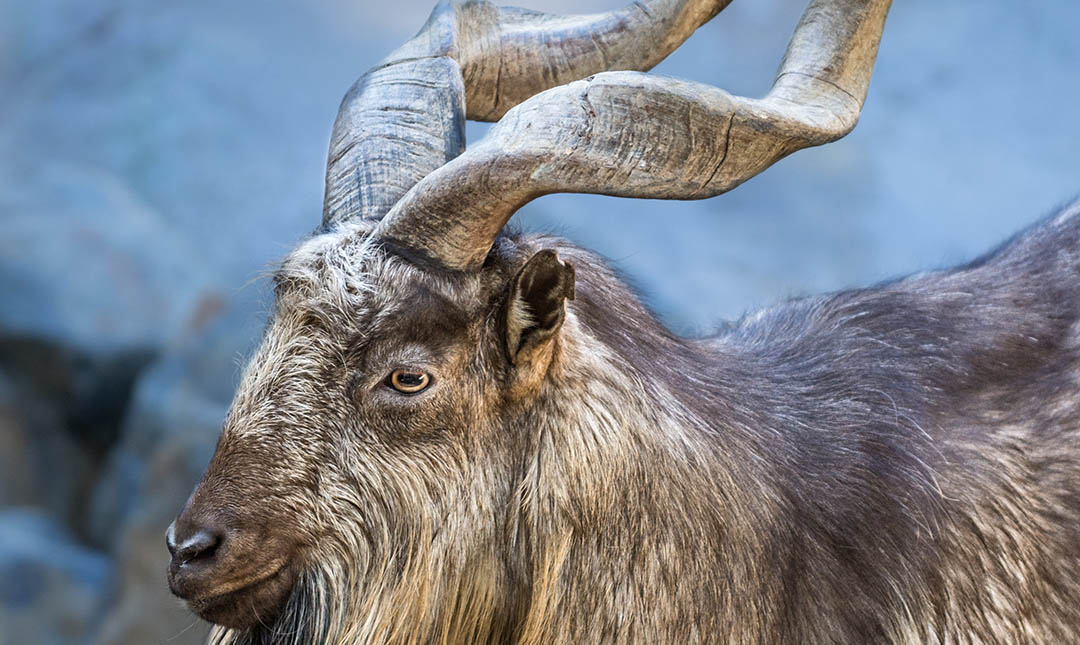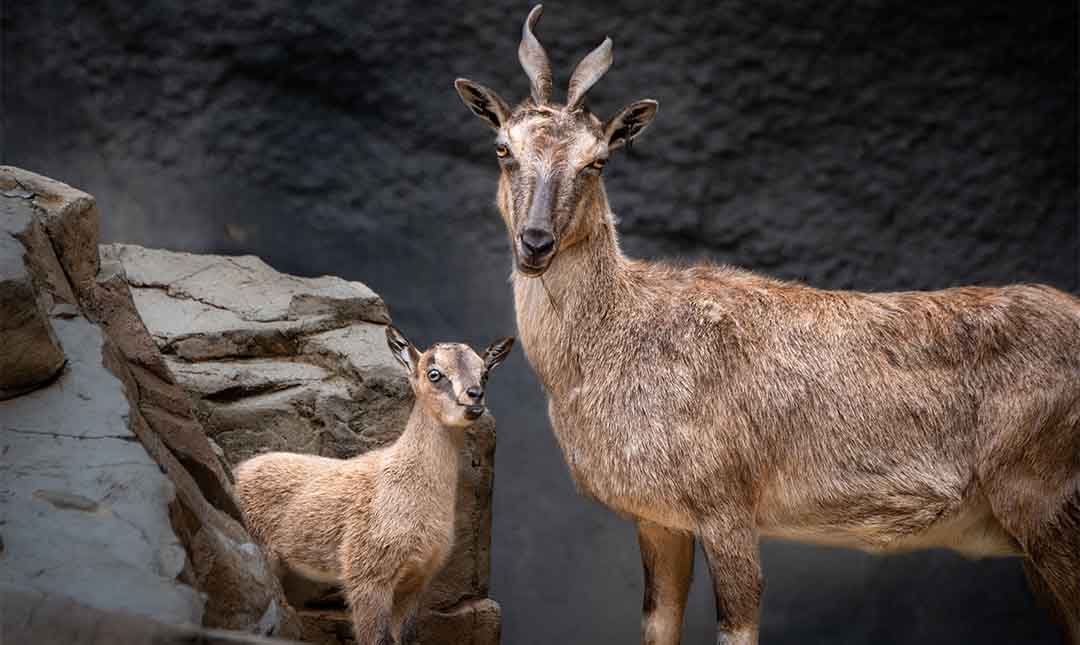About
These wild goats are well suited to their Himalayan habitat, which can extend up to altitudes of 12,000 feet. Markhors are expert mountain climbers. With short, stocky legs and protective callus-like pads on their knees, they navigate steep slopes. Flexible hooves with hard, horny edges provide traction and act as suction cups on rocky surfaces. They often stand on their hind legs to reach food and have even been observed climbing trees up to 20 feet tall using their specialized hooves and dewclaws for leverage on rough bark.
The males’ majestic corkscrew-like horns can grow to more than five feet in length. They are used to spar with other males for breeding rights. Unlike antlers, horns are never shed, and the number of twists in a markhor’s horn can tell you how old he is. Females also have horns, but they are thinner and smaller, growing to a maximum of 10 inches. Horns may be used to dig in the ground or remove bark from trees.
Female markhors usually travel in small groups of eight to 10 individuals. Male markhors spend most of their time alone outside of breeding season. At this time (called rut), males engage in intense combat, ramming horns to determine who will mate with females. These fights can be intense but rarely cause serious injuries. After a six-month gestation, females often give birth to twins. Females separate from the herd to give birth so mothers and babies (called kids) can learn to recognize each other by smell. Kids follow mom by the second day after birth and are weaned by six months of age.
A keen sense of sight and smell allows markhors to detect predators—which include snow leopards, leopards, lynxes, and wolves—from a distance. They grunt, snort, or thump the ground to sound an alarm.
Sadly, these wild goats are threatened largely due to overhunting and illegal poaching. The wild population of Tadjik markhors is estimated at about 1,600 individuals. Their remote location, war and civil unrest in the region, and shared international borders make studying the animals challenging and restrictions difficult to enforce.
These wild goats are well suited to their Himalayan habitat, which can extend up to altitudes of 12,000 feet. Markhors are expert mountain climbers. With short, stocky legs and protective callus-like pads on their knees, they navigate steep slopes. Flexible hooves with hard, horny edges provide traction and act as suction cups on rocky surfaces. They often stand on their hind legs to reach food and have even been observed climbing trees up to 20 feet tall using their specialized hooves and dewclaws for leverage on the rough bark.
The males’ majestic corkscrew-like horns can grow to more than five feet in length. They are used to spar with other males for breeding rights. Unlike antlers, horns are never shed, and the number of twists in a markhor’s horn can tell you how old he is. Females also have horns, but they are thinner and smaller, growing to a maximum of 10 inches. Horns may be used to dig in the ground or remove bark from trees.
Female markhors usually travel in small groups of eight to 10 individuals. Male markhors spend most of their time alone outside of breeding season. At this time (called rut), males engage in intense combat, ramming horns to determine who will mate with females. These fights can be intense but rarely cause serious injuries. After a six-month gestation, females often give birth to twins. Females separate from the herd to give birth so mothers and babies (called kids) can learn to recognize each other by smell. Kids follow their mom by the second day after birth and are weaned by six months of age.
A keen sense of sight and smell allows markhors to detect predators—which include snow leopards, leopards, lynxes, and wolves—from a distance. They grunt, snort, or thump the ground to sound an alarm. Sadly, these wild goats are threatened largely due to overhunting and illegal poaching. The wild population of Tadjik markhors is estimated at about 1,600 individuals. Their remote location, war and civil unrest in the region, and shared international borders make studying the animals challenging and restrictions difficult to enforce.
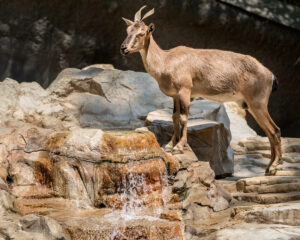
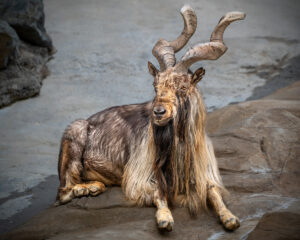
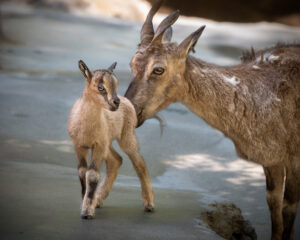
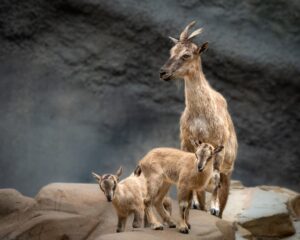

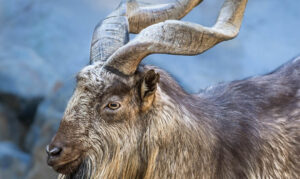
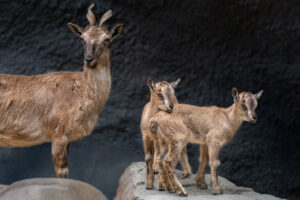
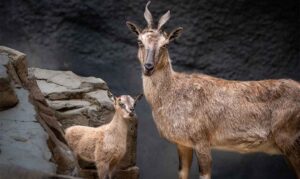
Habitat
Hillsides of the Himalayan Mountains in central Asia.
Diet
These herbivores graze on grasses and browse on leaves, shrubs, and twigs.
Physical Characteristics
Tadjik markhors stand between two and four feet at the shoulder with a body length of 4.5 to 6 feet. Males weigh between 175 and 250 pounds; females weigh between 70 and 100 pounds. Lifespan is estimated at 11 to 13 years.
LOCATION WITHIN THE ZOO
You’ll find this animal in the Asia section. See Zoo Map.

